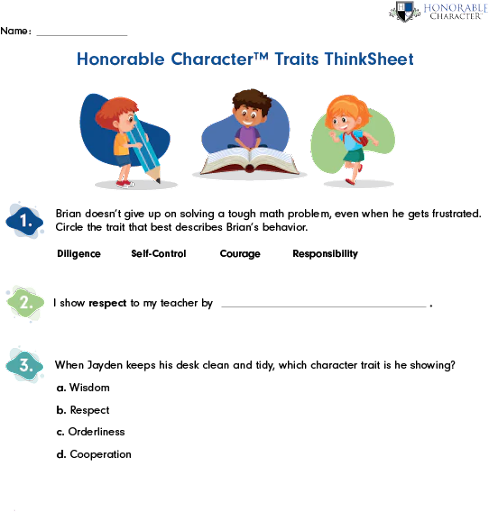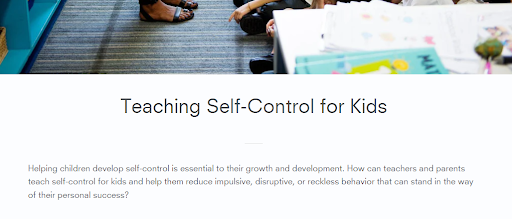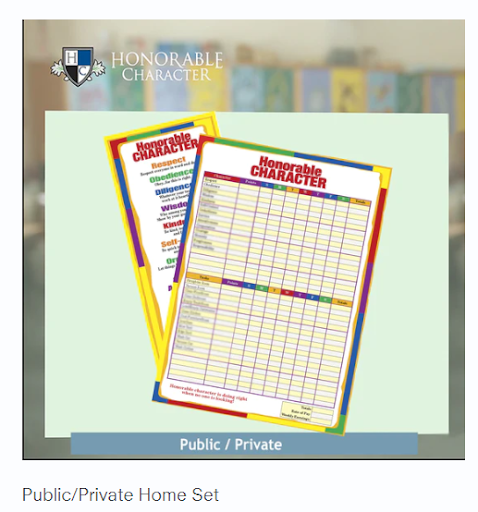Teaching Kids Respect in the Classroom
We all know what it feels like to be respected (or disrespected). But what does the word respect really mean? To teach respect in the classroom we must be able to define it. We won’t bore you with dictionary definitions—they’re not particularly helpful when working with kids, anyhow.
Respect can be summed up this way: It’s about treating others as you would like to be treated.

What does this actually look like in the classroom? Kids who show respect and are shown respect:
- Feel safe around their peers and their teacher
- Don’t yell or talk over others
- Listen to others even when they disagree
- Don’t try to control others
- Talk openly about their needs and wants
- Admit when they’ve made a mistake
- Freely express who they are and allow others to do the same.
Here are some recommendations, lesson ideas, and activities you can use to teach and encourage respect in the classroom:
Model respect.
Children look to adults for clues about behavioral expectations. If they see their caregivers and teachers treating others with respect and compassion, they’re more likely to do the same.
Children are master imitators. If we expect them to always say please and thank you, we must act as role models and do the same.
Start with yourself.
Too often adults make the mistake of demanding respect from children while treating children disrespectfully—for example, by shaming, lecturing, or being critical. This can happen when our “buttons get pushed” or we’re tired or frustrated.
Teachers and caregivers must commit to unlearning ineffective or harmful ways of responding to children and model the respectful behavior they expect from kids. We can train ourselves to think before we speak and choose our words carefully, knowing that children imitate what they see and hear.
Discuss respect with students.

Use age-appropriate language to let students know how they should treat others. Teach your children to use respectful words and phrases, like “Yes, Miss/Mrs. Smith,” and to say please and thank you.
Explain that respect is shown not only in their behavior but also in their attitude toward others. Make sure kids know that it’s not okay for anyone, including adults, to use disrespectful behavior.
Praise respectful behavior.

Recognize students when they demonstrate kindness, good manners, empathy, and respect for others. This intentional acknowledgment leads to positive outcomes.
Imagine what happens when the school staff looks for these behaviors, publicly praises the students, and then records the positive behaviors on a chart. Students are more likely to repeat the behaviors, resulting in a more encouraging classroom environment and school culture change.
One of the best ways for teachers to shift their focus toward the students’ positive attitudes and actions is simple tools and training that quickly add structure to guide teachers. Our Schoolwide Packages do just that. See it in action:
Create a visual anchor chart.
Visual charts are a great way to communicate with kids. Create an anchor chart listing ways kids can demonstrate respect in different settings—at home, at school, and in the community. Include eye-catching images to make it more visually appealing.
An anchor chart is a great way to open up more nuanced conversations about how certain behaviors may be considered respectful in some situations but disrespectful in others.
Play games that promote taking turns.

Taking turns is part of everyday life, whether it’s standing in line, sharing resources, or listening to someone without interrupting. Learning this important social skill helps kids exercise patience and show respect for others. It’s a vital part of social development and communication.
Try incorporating respect games for students with clear rules about taking turns into the classroom. Also encourage kids to engage in respect activities that involve turn-taking during recess and free time.
Teach the importance of self-reflection.
There are cultural and individual variations in who we feel deserves our respect and how we show it. For example, in some cultures, it’s considered disrespectful not to remove your shoes before entering someone’s home. In others, it’s perfectly acceptable to leave your shoes on.
Challenge students to reflect on their views about who they believe deserves respect, and under which circumstances. Here’s an exercise to try:
Begin by defining respect and what it looks and sounds like, so your students have a foundational understanding. Next, create some scenarios for students to consider. Ask them to decide whether they should give someone respect in each of the scenarios (have them use a signal, such as a thumbs up).
For example, ask students:
- Do you give someone respect because they are smart? Because they are talented? Why?
- Does someone need to earn your respect, or do you give it automatically? Ask them how a person would earn it.
- Do older people deserve more respect than younger people simply because of their age? If so, why? If not, why?
You might be surprised at just how different the answers are among students. This exercise is a good way for kids to reflect on their own beliefs about respect. It also helps teachers understand where students are coming from, both personally and culturally.
Respect Starts in the Classroom
Respect starts at home and in the classroom. It lays the groundwork for positive interactions and relationships throughout a person’s life. Respect is one of the core tenets of the Honorable Character Classroom Management System. Let us make it easy, painless, and simple for you to incorporate respect in the classroom.
Interested in learning more about..
Learn more about this highly effective, ready-made tool to promote prosocial behavior in students.






